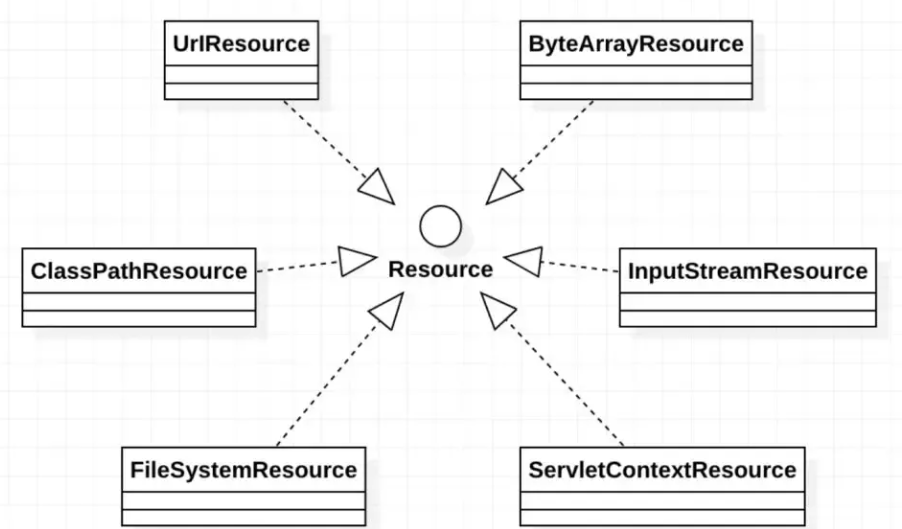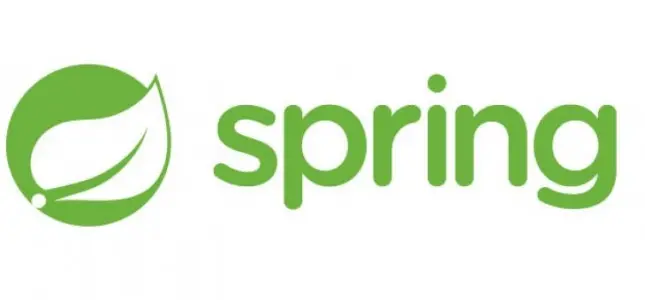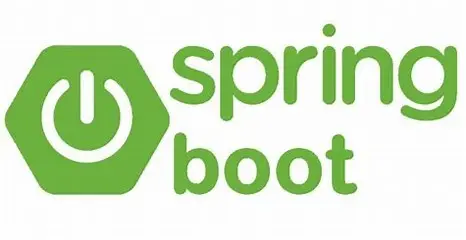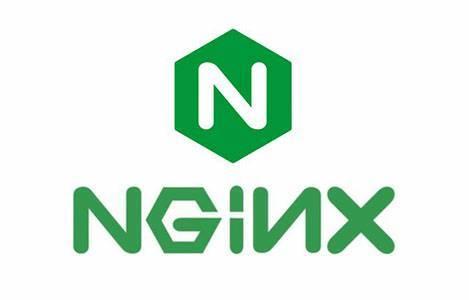Spring笔记六(资源操作:Resource)
一.概述
Java的标准java.net.URL类和各种URL前缀的标准处理程序无法满足所有对low-level资源的访问,比如:没有标准化的 URL 实现可用于访问需要从类路径或相对于 ServletContext 获取的资源。并且缺少某些Spring所需要的功能,例如检测某资源是否存在等。而Spring的Resource声明了访问low-level资源的能力。
二.Resource接口
Spring 的 Resource 接口位于 org.springframework.core.io 中。 旨在成为一个更强大的接口,用于抽象对低级资源的访问。
其中一些重要的方法:
- getInputStream(): 找到并打开资源,返回一个InputStream以从资源中读取。预计每次调用都会返回一个新的InputStream(),调用者有责任关闭每个流
- exists(): 返回一个布尔值,表明某个资源是否以物理形式存在
- isOpen: 返回一个布尔值,指示此资源是否具有开放流的句柄。如果为true,InputStream就不能够多次读取,只能够读取一次并且及时关闭以避免内存泄漏。对于所有常规资源实现,返回false,但是InputStreamResource除外。
- getDescription(): 返回资源的描述,用来输出错误的日志。这通常是完全限定的文件名或资源的实际URL。
其他方法:
- isReadable(): 表明资源的目录读取是否通过getInputStream()进行读取。
- isFile(): 表明这个资源是否代表了一个文件系统的文件。
- getURL(): 返回一个URL句柄,如果资源不能够被解析为URL,将抛出IOException
- getURI(): 返回一个资源的URI句柄
- getFile(): 返回某个文件,如果资源不能够被解析称为绝对路径,将会抛出FileNotFoundException
- lastModified(): 资源最后一次修改的时间戳
- createRelative(): 创建此资源的相关资源
- getFilename(): 资源的文件名是什么 例如:最后一部分的文件名 myfile.txt
三.Resource的实现类
Resource 接口是 Spring 资源访问策略的抽象,它本身并不提供任何资源访问实现,具体的资源访问由该接口的实现类完成——每个实现类代表一种资源访问策略。Resource一般包括这些实现类:UrlResource、ClassPathResource、FileSystemResource、ServletContextResource、InputStreamResource、ByteArrayResource
3.1 UrlResource访问网络资源
Resource的一个实现类,用来访问网络资源,它支持URL的绝对路径。
http:------该前缀用于访问基于HTTP协议的网络资源。
ftp:------该前缀用于访问基于FTP协议的网络资源
file: ------该前缀用于从文件系统中读取资源
public static void testResource() {
try {
UrlResource resourceUrl = new UrlResource("http://www.baidu.com");
//file:如果不指定盘符,则是在当前顶级根目录进行查询。
// UrlResource resourceFile = new UrlResource("file:D:\\ideaWorkSpace\\spring_learn\\jdbctemplate\\hello.txt");
UrlResource resourceFile = new UrlResource("file:hello.txt");
} catch (Exception e) {
throw new RuntimeException(e);
}
}
3.2 ClassPathResource 访问类路径下资源
ClassPathResource 用来访问类加载路径下的资源,相对于其他的 Resource 实现类,其主要优势是方便访问类加载路径里的资源,尤其对于 Web 应用,ClassPathResource 可自动搜索位于 classes 下的资源文件,无须使用绝对路径访问。
public static void testResourceClassPath() {
try {
//hello_path.txt 在resource资源目录下
ClassPathResource resource = new ClassPathResource("hello_path.txt");
InputStream inputStream = resource.getInputStream();
byte[] bytes = new byte[1024];
while (inputStream.read(bytes)!=-1){
System.out.println(new String(bytes));
}
} catch (Exception e) {
throw new RuntimeException(e);
}
}
ClassPathResource实例可使用ClassPathResource构造器显式地创建,但更多的时候它都是隐式地创建的。当执行Spring的某个方法时,该方法接受一个代表资源路径的字符串参数,当Spring识别该字符串参数中包含classpath:前缀后,系统会自动创建ClassPathResource对象。
3.3 FileSystemResource 访问文件系统资源
Spring 提供的 FileSystemResource 类用于访问文件系统资源,使用 FileSystemResource 来访问文件系统资源并没有太大的优势,因为 Java 提供的 File 类也可用于访问文件系统资源。
public static void testResourceFile() {
try {
//相对路径,当前顶级根目录下
FileSystemResource resource = new FileSystemResource("hello2.txt");
//绝对路径,带盘符
FileSystemResource resource2 = new FileSystemResource("C://hello2.txt");
} catch (Exception e) {
throw new RuntimeException(e);
}
}
FileSystemResource实例可使用FileSystemResource构造器显示地创建,但更多的时候它都是隐式创建。执行Spring的某个方法时,该方法接受一个代表资源路径的字符串参数,当Spring识别该字符串参数中包含file:前缀后,系统将会自动创建FileSystemResource对象。
3.4 ServletContextResource
这是ServletContext资源的Resource实现,它解释相关Web应用程序根目录中的相对路径。它始终支持流(stream)访问和URL访问,但只有在扩展Web应用程序存档且资源实际位于文件系统上时才允许java.io.File访问。无论它是在文件系统上扩展还是直接从JAR或其他地方(如数据库)访问,实际上都依赖于Servlet容器。
3.5 InputStreamResource
InputStreamResource 是给定的输入流(InputStream)的Resource实现。它的使用场景在没有特定的资源实现的时候使用(感觉和@Component 的适用场景很相似)。与其他Resource实现相比,这是已打开资源的描述符。 因此,它的isOpen()方法返回true。如果需要将资源描述符保留在某处或者需要多次读取流,请不要使用它。
3.6 ByteArrayResource
字节数组的Resource实现类。通过给定的数组创建了一个ByteArrayInputStream。它对于从任何给定的字节数组加载内容非常有用,而无需求助于单次使用的InputStreamResource。
四. Resource类图

五.ResourceLoader 接口
5.1 ResourceLoader 概述
Spring 提供如下两个标志性接口:
(1)ResourceLoader : 该接口实现类的实例可以获得一个Resource实例。
(2) ResourceLoaderAware : 该接口实现类的实例将获得一个ResourceLoader的引用。
在ResourceLoader接口里有如下方法:
Resource getResource(String location) : 该接口仅有这个方法,用于返回一个Resource实例。ApplicationContext实现类都实现ResourceLoader接口,因此ApplicationContext可直接获取Resource实例。
5.2.使用
public static void main(String[] args) {
ApplicationContext ctx = new ClassPathXmlApplicationContext();
// 通过ApplicationContext访问资源
// ApplicationContext实例获取Resource实例时,
// 默认采用与ApplicationContext相同的资源访问策略
Resource res = ctx.getResource("hello.txt");
System.out.println(res.getFilename());
}
public static void main(String[] args) {
ApplicationContext ctx = new FileSystemXmlApplicationContext();
Resource res = ctx.getResource("hello.txt");
System.out.println(res.getFilename());
}
5.3. ResourceLoader 总结
Spring将采用和ApplicationContext相同的策略来访问资源。也就是说,如果ApplicationContext是FileSystemXmlApplicationContext,res就是FileSystemResource实例;如果ApplicationContext是ClassPathXmlApplicationContext,res就是ClassPathResource实例
当Spring应用需要进行资源访问时,实际上并不需要直接使用Resource实现类,而是调用ResourceLoader实例的getResource()方法来获得资源,ReosurceLoader将会负责选择Reosurce实现类,也就是确定具体的资源访问策略,从而将应用程序和具体的资源访问策略分离开来
另外,使用ApplicationContext访问资源时,可通过不同前缀指定强制使用指定的ClassPathResource、FileSystemResource等实现类
Resource res = ctx.getResource("calsspath:bean.xml");
Resrouce res = ctx.getResource("file:bean.xml");
Resource res = ctx.getResource("http://localhost:8080/beans.xml");
六 ResourceLoaderAware 接口
ResourceLoaderAware接口实现类的实例将获得一个ResourceLoader的引用,ResourceLoaderAware接口也提供了一个setResourceLoader()方法,该方法将由Spring容器负责调用,Spring容器会将一个ResourceLoader对象作为该方法的参数传入。
如果把实现ResourceLoaderAware接口的Bean类部署在Spring容器中,Spring容器会将自身当成ResourceLoader作为setResourceLoader()方法的参数传入。由于ApplicationContext的实现类都实现了ResourceLoader接口,Spring容器自身完全可作为ResorceLoader使用。
测试类
import org.springframework.context.ResourceLoaderAware;
import org.springframework.core.io.ResourceLoader;
public class TestRes implements ResourceLoaderAware {
private ResourceLoader resourceLoader;
@Override
public void setResourceLoader(ResourceLoader resourceLoader) {
this.resourceLoader = resourceLoader;
}
public ResourceLoader getResourceLoader(){
return this.resourceLoader;
}
}
XML
<?xml version="1.0" encoding="UTF-8"?>
<beans xmlns="http://www.springframework.org/schema/beans"
xmlns:xsi="http://www.w3.org/2001/XMLSchema-instance"
xsi:schemaLocation="http://www.springframework.org/schema/beans http://www.springframework.org/schema/beans/spring-beans.xsd">
<bean id="testRes" class="com.manage.res.TestRes">
</bean>
</beans>
测试
TestRes中的ResourceLoader属性就是该spring容器将自身当作参数传入其中
@Test
public void test(){
ApplicationContext context = new ClassPathXmlApplicationContext("resBean.xml");
TestRes bean = context.getBean(TestRes.class);
ResourceLoader resourceLoader = bean.getResourceLoader();
Resource resource = resourceLoader.getResource("hello_path.txt");
System.out.println(resource.getFilename());
System.out.println(resourceLoader==context);//比较结果为true
}
七 使用Resource 作为属性
前面是Spring 提供的资源访问策略,但这些依赖访问策略要么需要使用 Resource 实现类,要么需要使用 ApplicationContext 来获取资源。实际上,当应用程序中的 Bean 实例需要访问资源时,Spring 有更好的解决方法:直接利用依赖注入。从这个意义上来看,Spring 框架不仅充分利用了策略模式来简化资源访问,而且还将策略模式和 IoC 进行充分地结合,最大程度地简化了 Spring 资源访问。
归纳起来,如果 Bean 实例需要访问资源,有如下两种解决方案:
- 代码中获取 Resource 实例。
- 使用依赖注入。
对于第一种方式,当程序获取 Resource 实例时,总需要提供 Resource 所在的位置,不管通过 FileSystemResource 创建实例,还是通过 ClassPathResource 创建实例,或者通过 ApplicationContext 的 getResource() 方法获取实例,都需要提供资源位置。这意味着:资源所在的物理位置将被耦合到代码中,如果资源位置发生改变,则必须改写程序。因此,通常建议采用第二种方法,让 Spring 为 Bean 实例依赖注入资源。
测试类
将Resource作为属性
import org.springframework.core.io.Resource;
public class ResourceBean {
private Resource resource;
public Resource getResource() {
return resource;
}
public void setResource(Resource resource) {
this.resource = resource;
}
public void show(){
System.out.println(resource.getFilename());
System.out.println(resource.getDescription());
}
}
XML
在依赖注入的时候,配置资源路径
<?xml version="1.0" encoding="UTF-8"?>
<beans xmlns="http://www.springframework.org/schema/beans"
xmlns:xsi="http://www.w3.org/2001/XMLSchema-instance"
xsi:schemaLocation="http://www.springframework.org/schema/beans http://www.springframework.org/schema/beans/spring-beans.xsd">
<bean id="resBean" class="com.manage.res.ResourceBean">
<property name="resource" value="hello_path.txt"></property>
</bean>
</beans>
测试
@Test
public void testRes(){
ApplicationContext context = new ClassPathXmlApplicationContext("beanRes.xml");
ResourceBean bean = context.getBean(ResourceBean.class);
bean.show();
}
八 应用程序上下文和资源路径
8.1 概述
不管以怎样的方式创建ApplicationContext实例,都需要为ApplicationContext指定配置文件,Spring允许使用一份或多分XML配置文件。当程序创建ApplicationContext实例时,通常也是以Resource的方式来访问配置文件的,所以ApplicationContext完全支持ClassPathResource、FileSystemResource、ServletContextResource等资源访问方式。
ApplicationContext确定资源访问策略通常有两种方法:
(1)使用ApplicationContext实现类指定访问策略。
(2)使用前缀指定访问策略。
8.2 ApplicationContext实现类指定访问策略
创建ApplicationContext对象时,通常可以使用如下实现类:
(1) ClassPathXMLApplicationContext : 对应使用ClassPathResource进行资源访问。
(2)FileSystemXmlApplicationContext : 对应使用FileSystemResource进行资源访问。
(3)XmlWebApplicationContext : 对应使用ServletContextResource进行资源访问。
当使用ApplicationContext的不同实现类时,就意味着Spring使用响应的资源访问策略。
8.3 使用前缀指定访问策略
实验一:classpath前缀使用
package com.atguigu.spring6.context;
import org.springframework.context.ApplicationContext;
import org.springframework.context.support.FileSystemXmlApplicationContext;
import org.springframework.core.io.Resource;
public class Demo1 {
public static void main(String[] args) {
/*
* 通过搜索文件系统路径下的xml文件创建ApplicationContext,
* 但通过指定classpath:前缀强制搜索类加载路径
* classpath:bean.xml
* */
ApplicationContext ctx =
new ClassPathXmlApplicationContext("classpath:bean.xml");
System.out.println(ctx);
Resource resource = ctx.getResource("hello.txt");
System.out.println(resource.getFilename());
System.out.println(resource.getDescription());
}
}
实验二:classpath通配符使用
classpath :前缀提供了加载多个XML配置文件的能力,当使用classpath:前缀来指定XML配置文件时,系统将搜索类加载路径,找到所有与文件名匹配的文件,分别加载文件中的配置定义,最后合并成一个ApplicationContext。
ApplicationContext ctx = new ClassPathXmlApplicationContext("classpath*:bean.xml");
System.out.println(ctx);
当使用classpath * :前缀时,Spring将会搜索类加载路径下所有满足该规则的配置文件。
如果不是采用classpath * :前缀,而是改为使用classpath:前缀,Spring则只加载第一个符合条件的XML文件
注意 :
classpath : 前缀仅对ApplicationContext有效。实际情况是,创建ApplicationContext时,分别访问多个配置文件(通过ClassLoader的getResource方法实现)。因此,classpath :前缀不可用于Resource。
使用三:通配符其他使用
一次性加载多个配置文件的方式:指定配置文件时使用通配符
ApplicationContext ctx = new ClassPathXmlApplicationContext("classpath:bean*.xml");
Spring允许将classpath*:前缀和通配符结合使用:
ApplicationContext ctx = new ClassPathXmlApplicationContext("classpath*:bean*.xml");
- 本文标签: Java Spring
- 本文链接: https://www.tianyajuanke.top/article/79
- 版权声明: 本文由吴沛芙原创发布,转载请遵循《署名-非商业性使用-相同方式共享 4.0 国际 (CC BY-NC-SA 4.0)》许可协议授权












